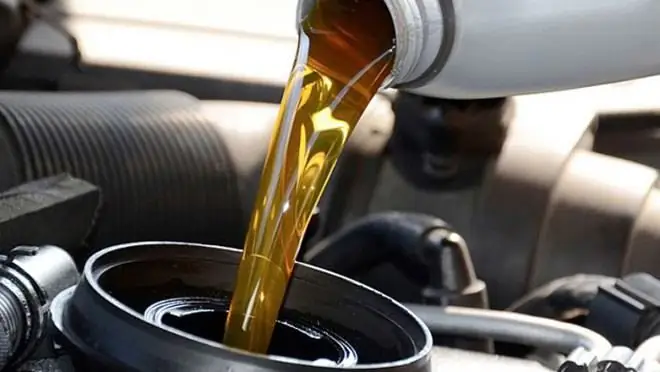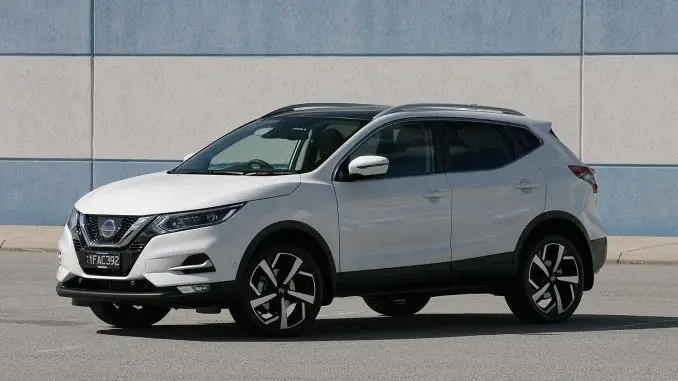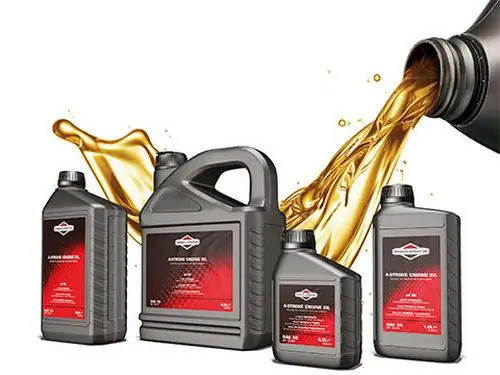2025 Author: Erin Ralphs | [email protected]. Last modified: 2025-01-22 21:14:09
What kind of car does not move on the roads of the world! In the collections of manufacturers there are hatchbacks, sedans, crossovers - they are all stylish and beckon with a favorable atmosphere of comfort. Among them are frame and frameless designs. Why is the second variant, called “unique body”, being sold more often in car markets, and drivers are not going to change it to another variant?
Design Features

In fact, the history of the frame version began much earlier, and the term "carrier body" appeared as an alternative. In simple words, the device is simple. This is the combination of the frame and body into one practical whole. The only caveat is that the frame is replaced by spars, supplemented by transverse strength elements.
Trucks and SUVs still have a frame. In a load-bearing body, technical and design features are similar to frame models and are successfully used in the automotive industry.
Records from historical pages
The first desire to create something like this arose in 1922 at Lancia Lambda. Unitdid not have a roof, it was accompanied by sidewalls that served as a hint of the frame. The design idea reached the key moment of the production "epopee" in 1930, when the Americans thought of using sheet steel. The fruitful cooperation of an engineer from Austria with the American company Budd resulted in obtaining a patent for the production of a load-bearing body, which quickly gained popularity.
Production secrets
A successful union of pressed metal sheet materials of various shapes, combined into one system, is a brief description of the case. To create a load-bearing car body, developers use contact-type spot welding. The main advantage lies in the relatively low weight and strength.
The constructive component is comparable to the principle of the device of an eggshell. Attempts to crush it longitudinally will end in a fiasco. In emergency situations, the shock wave spreads to the entire structure, not concentrating on one area. In frame versions, the design of the load-bearing body served only as a decor. Three types of steel are involved in the formation of body parts. The formula for success in good service strength elements is the use of high-strength, low-alloy and ultra-strong steel.
The priority of this choice is reduced to increased tensile strength, that is, 2 or 4 times in relation to low carbon steel material. This feature allows you to reduce sheet thickness and weight without compromising quality. In some models, a combination of different types of material is appropriate. To obtain solid panels, lasers are actively used.welding technology. Before buying, motorists are still wondering which version to choose, a frame or a monocoque body.
Likbez on differences in designs

Frame cars, created from two beams with a cross member, have become less likely to appear on the roads. The word "frame" means the rigid "skeleton" of the machine, on which spare parts and assemblies are held. Such a device is easier to maintain and operate. You can highlight the distinctive features of the frame and load-bearing bodies.
- Frequently, frame models made from hollow tubes are used in racing vehicles. This design increases the dimensions of the vehicle.
- The load-bearing body “eats up” less interior space.
- Imperfection in technology has pushed frame variations a little to the background of sales, but they are used to produce heavy SUVs that can cope with increased loads. The reason for the decline in popularity was passive safety in case of accidents.
- According to manufacturers, attachments and parts are easier to attach to the frame. The manufacturing process itself is much simpler, since it is assembled separately from the body part.

The conclusion regarding the choice of a frame or load-bearing body is as follows: frame structures successfully fulfill their purpose for the most part in special equipment, when the question arises of the need to carry out hard work. In ordinary life, motorists prefer cars without a skeleton in order to increase safety.
A little abouttypologies

The following types of load-bearing bodies of frameless models are presented on the car market:
- having a bearing base;
- products endowed with a load-bearing body.
The lion's share of the loads in the machines of the first type falls on the bottom of the vehicle. It is reinforced and has a flat appearance. In models of the second type, the load during movement falls mainly on the frame.
In life there are types with a closed power structure, where the power and vertical elements are synchronized with the roof. Convertibles, roadsters are modifications with an open structure.
Separation by design features
Design design also allows body classification.
- In frame-panel form, the load-bearing elements of the body are mounted on a metal frame constructed from pipes or stamped profiles. Facing increases rigidity, durability, therefore this method of creation was used in the projects of PAZ buses, S1L motorized carriages, and French quads. The advantages boil down to the fact that it is easier to make handicraft repairs here.
- The "skeletal" body has a reduced format and is presented in the form of separate arcs, racks, fixed by welding facing panels. Its difference from the previous one is in a lower mass.
- The majority of vehicles that can be found on modern roads belong to frameless types. The production line is based on spot welding and large size panels. They are stamped from steel sheet. The punches act as a framework.
The whole structure is divided into front, back and central parts. It is worth considering in more detail each of them.
Front Tricks

Spars are the leading actors. The bottom of the front holds these hollow and longitudinal parts firmly. High strength steel is used in their production. With one part they are attached to the engine compartment, the other - to the bottom of the wheel arch aprons.
The composition includes mudguards, aprons, representing the inner panels placed around the wheels. Their mission is to protect the rims from dirt, to prevent corrosion. In a monocoque body structure, they add rigidity.
The front fenders are held up by introducing a system of upper mudguard reinforcements. Suspension struts are held by body cups. The engine compartment frame helps protect the radiator cooling system. The hood latch is also fixed to it. The frame itself is synchronized with spars and mudguards.
Suppresses blows in disasters bumper booster. The front fenders, located near the doors, are bolted on.
How is the centerpiece "born"?
Features of the center of the monocoque body
The structural segment is considered to be the bottom - a solid panel, from below on which power elements are mounted. Rigidity indicators are increased by attaching the seats.
Engineers have thought through safety to the smallest detail, surrounding the cabin with reinforced panels. B-pillar, doors, roof, structures behind the dashboard - all of this is endowed with reinforcement. The roof is held up by vertical struts designed to keep the passengers safe in case the iron horse rolls over. The side panels have no welded components, less prone to corrosion.
Add strength to the structure of the door sills, rear bulkhead separating the trunk and passenger row. Doors include external panels, amplifiers inside, power windows. The shape of the roof is the main secret of rigidity. Internal reinforcements are glued to it from the inside.
Rear end features

Steel plates with high reliability parameters are purchased by manufacturers to form the rear spars. Their task is to hold the floor of the luggage compartment, constructed from stamped sheet, taking on the loads during the transportation of goods.
The rear fenders in the design of the car's load-bearing body are not removable, tightly welded to the body. Body cups hold the top of the rear pillars. It is worth summarizing and highlighting the advantages of load-bearing bodies.
Positive Feedback

What do car owners say? The viability of the vehicle depends on the performance, reliability of the base. In fact, the load-bearing body can be compared with the "skeleton" of a person.
- Benefits include excellent torsional rigidity, light weight.
- Choosing between frame and carriercar body, consumers prefer the second option due to the good responsiveness of the vehicle to the steering commands of the driver.
- From an economic point of view, this style creates fewer conditions for high fuel consumption. The owners note the improvement in dynamics. Security ratings are breaking records too.
- On small-capacity "crews" the noise of levers, suspensions, other parts is not very noticeable.
Negative sides
Among the minuses mentioned increased road noise in trucks. It is very difficult to repair a car with your own hands, it is better to come to a professional service station. Under the condition of driving on deep off-road, one has to deal with too high mobility of components. This leads to rapid wear and forced recourse to the masters. What should automakers do to achieve the perfect result?
Compromise found
American engineering has made good progress with its many tests and attempts to find the best car to meet the demands of road lovers. Cars made in the USA are large. The rigid body is connected to a peripheral frame devoid of crossbars. The result is a closed contour with a box-shaped section. Unwanted vibrations are dampened by rubber-based cushions, and strength is achieved due to the presence of a huge number of points of contact between the body and the frame. In this regard, expensive and large-sized premium cars are created on the basis of frames. For mass consumption, a load-bearing body is operated.
Citroens serve as examples where the bottom is the determining factor that takes the load. On sports cars, this production method is rarely used. In order to save on them, the side plates are made of aluminum or fiberglass, so they are not able to withstand increased loads.
Single body is a common option, rolling in today's road conditions.
Recommended:
Automotive oils 5W30: rating, characteristics, classification, declared qualities, advantages and disadvantages, reviews of specialists and car owners

Every car owner knows how important it is to choose the right engine oil. Not only the stable operation of the iron “heart” of the car depends on this, but also the resource of its operation. High-quality oil protects mechanisms from various adverse effects. One of the most popular types of lubricants in our country is oil with a viscosity index of 5W30. It can be called universal. The 5W30 oil rating will be discussed in the article
"Nissan Qashqai": performance characteristics, types, classification, fuel consumption, declared power, maximum speed, operating features and owner reviews

In March of this year, the premiere of the updated Nissan Qashqai 2018 model took place at the Geneva International Motor Show. It is planned to enter the European market in July-August 2018. The Japanese came up with the ProPilot 1.0 supercomputer to facilitate the management of the new Nissan Qashqai 2018
Classification and types of engine oil

There are a huge number of motor oils - how to choose the right one among them? What do all these symbols on the packages mean?
Hydraulic fluid: types, classification and composition

The article is about hydraulic fluid. Classifications, varieties, properties and composition of mixtures of this type are considered
Motor oils: oil properties, types, classification and characteristics

Beginner drivers face many questions when operating their first car. The main one is the choice of engine oil. It would seem that with today's product range on store shelves, there is nothing easier than choosing what the engine manufacturer recommends. But the number of questions about oils does not decrease

